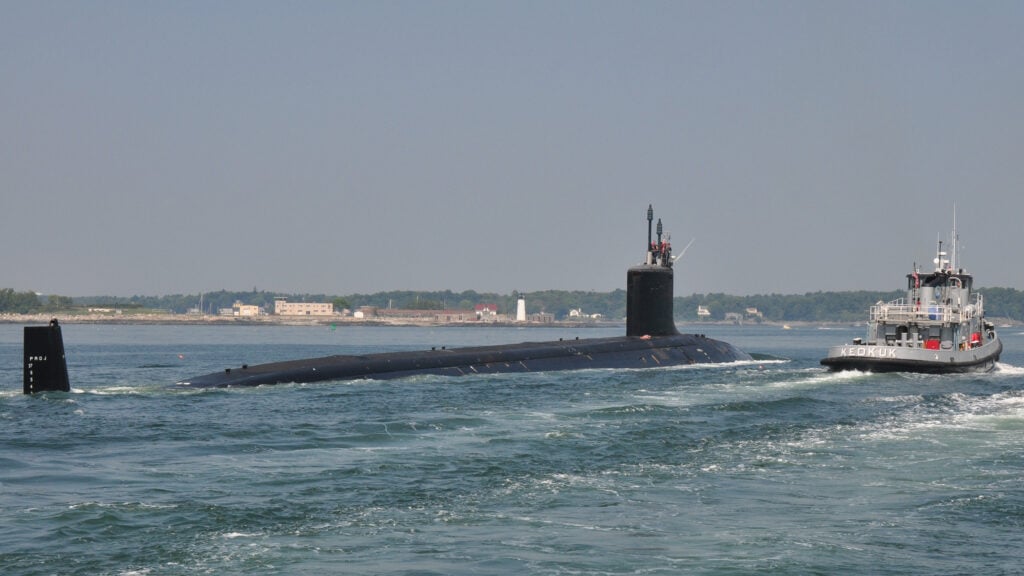
The US Navy plans to integrate the Conventional Prompt Strike weapon system onto Zumwalt-class destroyers and Virginia-class fast attack submarines. (US Navy)
WASHINGTON — The Navy for the first time has outlined the initial production schedule for its hypersonic missile program, a $3.6 billion dollar buy for 64 rounds over the next five years.
Conventional Prompt Strike is the Pentagon’s upcoming hypersonic weapon being jointly developed by the Navy and Army. The Navy will employ it on Zumwalt-class destroyers and Virginia-class submarines, while the Army will operate a land-based variant.
The details of the Navy’s schedule to produce the all up rounds for the program are outlined in the service’s newly released budget justification documents. The request for fiscal 2024 includes $341 million for the first eight rounds.
The service’s projected schedule for future years, which are subject to change when those budget requests are submitted, include 10 rounds for $440 million in FY25; 11 rounds for $663 million in FY26; 16 rounds for $988 million in FY27; and 19 rounds for $1.1 billion in FY28.
It is not clear as of press time whether the Army will also seek funding in its new budget request for all-up rounds — meaning the round contains the warhead, missile body, container and other necessary components for launch — because the associated justification documents have not yet been made public. An Army spokesperson did not immediately respond to questions from Breaking Defense.
The Navy plans to integrate CPS onto the Zumwalt destroyers in FY25 and onto its submarines around FY29. Despite achieving a variety of “Joint Flight Campaigns” last year, the Pentagon’s top weapons tester recently reported it is too early in the program’s life cycle to assess its overall effectiveness.
Breaking Defense has previously reported the low number of Zumwalt-class destroyers may also pose issues for the Navy during integration due to the ship’s limited availability for testing.
One of the most senior Navy officers overseeing the weapon’s development earlier this month acknowledged to lawmakers the Pentagon had to cancel a recently planned test due to a “battery failure,” USNI News reported.
When asked during a press conference at the Pentagon why the service was proceeding with production despite the testing mishaps, Rear Adm. John Gumbleton, the service’s officer charged with crafting the annual budget request, said the request is “an endorsement of the capability.”
“The point of testing is to learn things. But we have confidence that we’re going to be able to field the system as required and we’ll work with our industrial partners to make sure we stay on track for that — for that production,” he said March 13.
On the Air Force’s end, that service intends to finish its research and development spending on one of its key hypersonic weapons, the Air-Launched Rapid Response Weapon, in FY24, Breaking Defense reported. The Air Force’s other major program, the Hypersonic Attack Cruise Missile, will continue research and development through FY28.
The service previously scrapped one of its hypersonic weapons programs, the Hypersonic Conventional Strike Weapon, due to budget pressures in 2020.






















